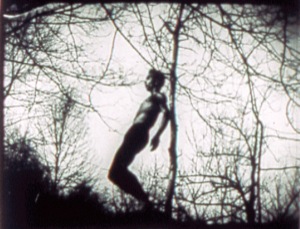Dans ce film j'ai tenté de placer le danseur dans un espace cinémato-graphique sans limites. En outre, il partage avec la caméra une relation, par le mouvement. Le mouvement du danseur crée une géographie qui n'a jamais existée. Par un mouvement de pied, il rend voisin des lieux lointains. Etant un rituel cinématographique, ce n'est pas réalisé uniquement en des termes spatiaux, mais temporels créés par la caméra. Dans son approche, nous nous trouvons au début d'un art pratiquement nouveau, le choré-cinéma, dans lequel la danse et la caméra collaborent à la création d'une seule oeuvre d'art. John Martin, New York Times, 1946
In this film, I have attempted to place a dancer in a limitless,
cinemato-graphic space. Moreover, he shares, with the camera, a
collaborative responsibility for the movements themselves. This is,
in other words, a dance which can exist only on films The movement of the dancer creates a geography that never was. With a turn of the foot, he makes neighbors of distant places. Being a film ritual, it is achieved not in spatial terms alone, but in terms of a time created by the camera.
Maya Deren on A Study in Choreography for the Camera, 1945
Thèmes : Body, Dance, Suitable for children
- Année
- 1945
- Nationalité
- Etats-unis
- Durée
- 00:02:30
- Format de projection
- 16mm
